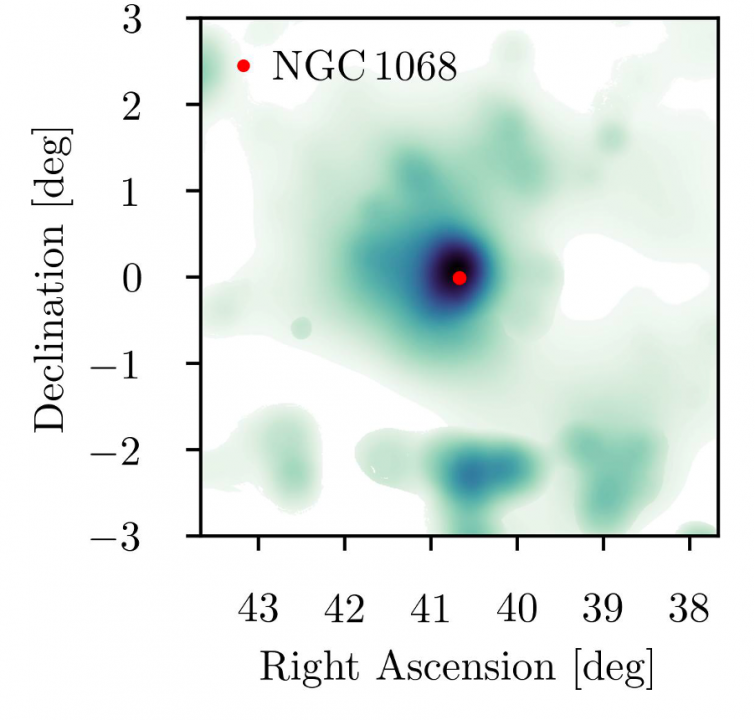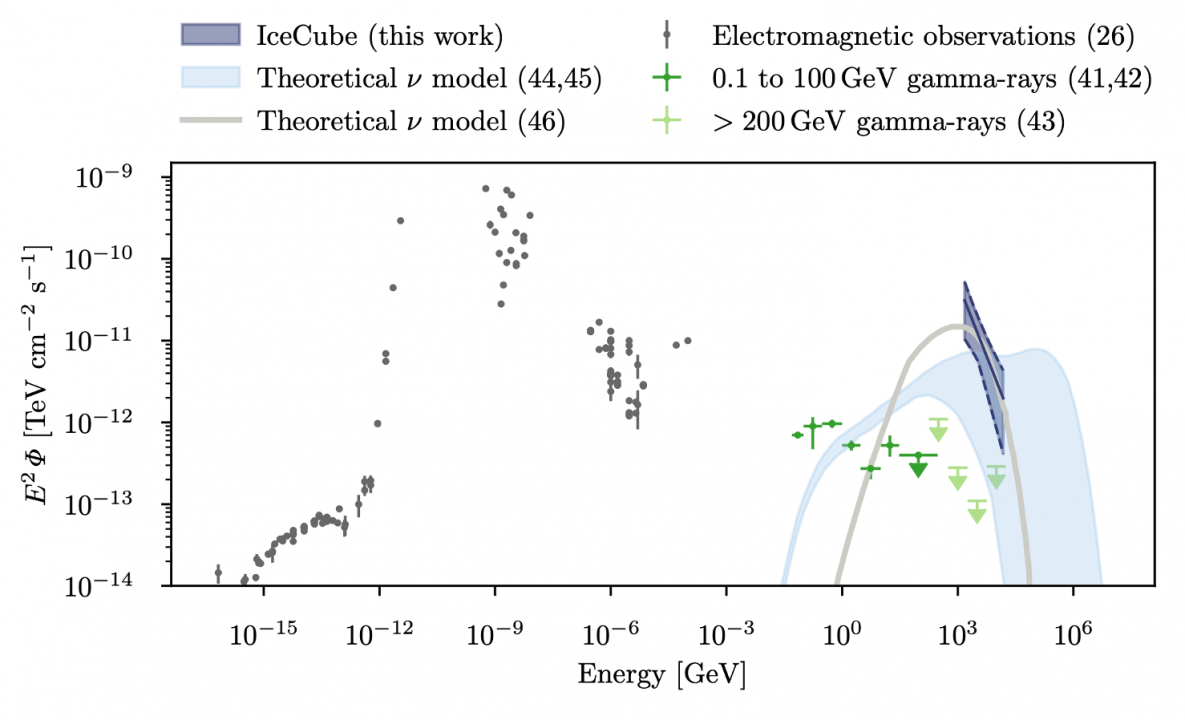News & Events
November 14, 2022
Latest Result from IceCube Neutrino Observatory
IceCube Neutrino Observatory located at the South Pole has detected neutrino emission above 1 TeV from active galaxy NGC 1068 with 4.2 sigma significance above the background expectation. IceCube first discovered the existence of high-energy neutrinos in 2013. Since then, there has been a continuous effort to determine the origin of these high-energy neutrinos.

The skymap of high-energy neutrinos around NGC 1068 vicinity
The first evidence of a potential source was revealed by multi-messenger observations of a high-energy neutrino event reported by IceCube in 2018 in the direction of a blazar TXS 0506+056, where coincident very-high-energy gamma-ray activity was detected. The measurement of high-energy neutrinos from NGC 1068, announced by IceCube in 2022 on November 3rd, marks the report of a second potential neutrino source. However, the emission from NGC 1068 shows different properties than what we have seen from TXS 0506+056. First, this is the first time neutrino emission is detected over a long period of 10 years. Second, there was no detection from high-energy gamma-ray observations despite 125 hours of deep exposure time.

The energy spectral distribution for NGC 1068 obtained by the multi-messenger observations, electromagnetic wave and neutrino observations. 1 TeV measured by IceCube in the vicinity of the active galaxy NGC 1068 is inconsistent with the background hypothesis by 4.2 sigmas (Click image to enlarge).
As NGC 1068 is only 47 million light-years away, the absorption of high-energy gamma-ray cannot be explained by inter-galactic propagation loss. This indicates that the neutrino emission may come from an obscure environment where high-energy gamma rays generated together with high-energy neutrinos could not escape.
With a cubic kilometre active volume, IceCube remains the only neutrino telescope capable of measuring the high-energy astrophysical neutrino flux.
Professor Park at Queen’s University comments,
Neutrino astrophysics can offer unique information about the universe as neutrinos only weakly interact with matter and can travel a much longer distance and probe obscure regions of the astrophysical objects. This new result is exciting as this is the first evidence of neutrino from an obscure environment. The flux estimated from TXS 0506+056 and NGC 1068 is only a few % of the total astrophysical neutrino flux measured by IceCube. This shows that rich science is waiting for us in the neutrino sky.
